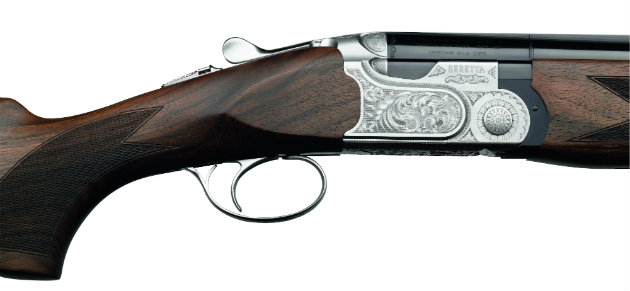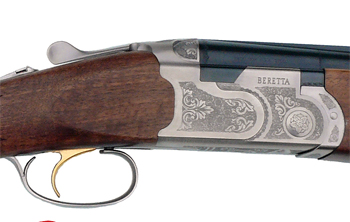Beretta 690 Field I shotgun reviewed by Shooting Times
Renowned for its stylish and high-performing shotguns, Beretta has built on what it does best and triumphed with the Beretta 690 Field I shotgun, reports Lewis Potter

Beretta 690 Field I
Overall Rating: 89%
Manufacturer: Beretta
Pros: A worthy successor to the 680 series
Price as reviewed: £2,275
When a gunmaker is established with a strong following, there still arises from time to time the need to bring something new to the market. There are three possible routes. First, something new and revolutionary that could be a great success or could offend previously loyal customers, for shooters are ever conservative and sometimes fickle.
Another relatively safe option is a quick dressing-up of an existing model — perhaps an eye-catching chequering pattern, a brighter finish around the action and a bit more decoration. This worked well for years in the UK — think of all those Anson & Deeley boxlocks made in the Birmingham trade where the main differences were the finish and the name.
The third route is one of subtle improvement, building on an existing design — evolution rather than revolution. This is the philosophy that Beretta has followed with the 690 Field I. It is, of course, related to the 692, the competition gun that preceded it, and is a variant on the slightly more expensive 690 Field III.
The Beretta 690 Field I shotgun is still a Beretta
First impressions on liberating the 690 Field I from its sturdy case were very much that a Beretta is still a Beretta with the familiar shape and basic style one expects. The distinctive screw-in hinge discs (or trunnions) are still there, as are the shoulders projecting from either side of the top barrel that the twin-tapered locking bolts engage.
Having said that, the action body appears a little sturdier than the old 680 series and has a very clean-cut look. This is in part due to the decoration around the fences and the crisp shaping of the decorative side panels.
Another eye-catching feature is the neat top rib having full-length contact with the barrel and quite delicate ventilated cut-outs. Narrow, “file cut” and topped with a traditional foresight bead, it is very much what most customers would expect on a game gun. What many aficionados might not expect is a shiny, silver- coloured plated trigger so there is no chance of wearing the more common gold plating away until the trigger looks shabby.
Leaving the technical detail aside for a moment, much of the design will be comfortably familiar to Beretta users, including the shaping of the raised panels at the head of the stock, the size and curve of the pistol grip and the laser-cut chequering pattern. The fore-end has what is often called an English-style rounded end, though the drop from the front of the knuckle produces a slightly sow-bellied look. However, it has a practical and comfortable feel in the hand, which is important.
Technicalities
The 690 Field I handles well and at around 7¼lb loaded, it has enough substance to give good swing characteristics, while the balance is such that it is still quick to point. Drop across the comb is 1½in to 2½in, which is pretty much what you expect with right-hand cast (cast off ) while left-hand cast (or cast on) is an option and some toe-out.
A length of pull a smidgen over 14¾in follows the present-day trend, and the micro-core butt pad has
a good reputation for absorbing recoil. The barrels on this gun measure 30in, but there is an option of 28in barrels.
The barrels are assembled on the monoblock principle, which is a proven and widely used method. Chamber length is 76mm (3in) and the gun is superior or steel-shot proofed and has hard chrome-lined bores.
Five long Beretta Optima choke tubes are provided, ranging from cylinder to quarter, half, three- quarters and full. Beretta’s useful choke key with the sprung arms that hold the bore of the choke tube does make things easy, especially when changing chokes in the field.
The safety button/barrel selector is larger than of old and deeply serrated, giving a very positive thumb grip, while the one/two-dot barrel indicator is now two dots either side of the selector in white and red, the latter indicating which barrel is “live”. Also, as befits a game gun, the 690 Field I comes with an automatic safe.
Internally, the lock work on this shotgun holds no great surprises. It is the usual neat, if visually slightly complex, and reliable assembly, mounted on the trigger-plate and powered by helical mainsprings. There are differences in detail to the earlier series but it is still clearly Beretta. Trigger-pulls proved to be crisp and set at a reasonable 4½lb. Hidden away in the fore-end iron stale/steel is another spring to provide the fore-end fit with constant pressure against the knuckle.

On test
Cartridges on test were Eley Pigeon Select and VIP Game, Gamebore Black Gold and Clear Pigeon, Hull Cartridge Special Pigeon and Lyalvale Express Super Game. The Beretta handled all of them well, placing the shot pattern to point of aim.
Everything worked well, as one might expect from a maker with an enviable reputation for reliability.
Conclusion
The Beretta 690 Field I shotgun is a worthy successor to the 680 series. The stock wood on the test gun is dark with attractive veining, and the fit of wood to metal is very good.
The decoration around the action is a mixture of scroll, ribbon and stylised foliate work, which I felt was attractive and novel. The detail on the Deeley-type fore-end catch, along with the ribbon work on the underside of the action body, was my favourite piece of work.
I think Beretta has got this 690 Field I just right.

Beretta DT11 shotgun review
Gun reviews: Beretta DT11 shotgun: The DT11 is Beretta’s new competition gun.
A close look at the Beretta 686 Silver Pigeon 1
Discover a few surprises with Beretta’s impressive silver pigeon budget shotgun!
Beretta Universal shotgun review
Beretta Universal shotgun review: Beretta’s new Universal is an all-round ‘entry level’ over-under.
Beretta 686E Evo shotgun reviewed by Sporting Gun
Beretta 686E Evo shotgun review: Jason gets to grips with Beretta’s latest version of the 686.
Beretta launch new Beretta 692 Competition shotgun
Beretta 692 Competition shotgun: The 682 became almost legendary in status as the competition over-under of choice from Beretta.
Beretta Jubilee 12-bore shotgun review
Beretta Jubilee 12-bore shotgun review: This Beretta is the most upmarket gun in the 600 series.
Beretta 690 Field I reviewed by Shooting Gazette
It is a natural human instinct to have favourites even when we are told we really shouldn’t. Though you might happily wear a smile and…
Verdict
A triumph by Beretta















